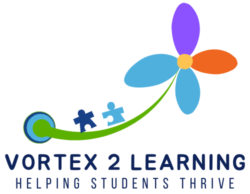Self-regulation strategies are essential for students to learn how to self-advocate in the classroom. One effective way to teach students self-regulation is through the use of social stories, calming strategies, and break cards.
Learning how to self-regulate is an important skill for students in the early grades, especially for those with disabilities, and students on the autism spectrum. When students are able to recognize and manage their emotions, they are better equipped to navigate difficult situations in the classroom.This includes times when they may feel frustrated or overwhelmed.
By having good strategies in place to self-regulate, students can effectively communicate their needs to their teachers and advocate for themselves in a productive and appropriate manner. This not only helps the student feel more in control of their learning but also fosters a positive and inclusive classroom environment.
Three Short Social Stories For Self Regulation and Self Advocacy
I’ve created this social-emotional packet which contains three versions of social stories, each designed to help students regulate their emotions and advocate for themselves. Additionally, the stories provide students with real-life scenarios that they can relate to and learn from.

The first social story focuses on a scenario where a student may be experiencing strong feelings and emotions. Also, these emotions may be confusing to them and they may not know how to deal with them. Through this story, students learn that they can ask for a break to calm down and regulate their emotions.
The second social story addresses the issue of a student’s frustration with their workload. In this story, students learn to ask for help if they need it and to use self-regulating tools. For example, they can use tools like checklists and choice boards to manage their emotions.
The third social story walks students through the entire process of how to ask for a break. By using break cards and other self-regulating tools, students can learn to recognize when they need a break. Hence, how to ask for one in a respectful and appropriate manner.
Calm Down Posters, Checklists, Choice Boards and Brake Boards
The self-regulation packet features two calm-down posters with four strategies each that can be placed in the calming areas of the classroom. In addition, there are choice boards with the many strategies a child can employ. The “I Need a Break” card features real-life photos of diverse kids in relaxing/calming poses for them to choose from. Also included in the tool kit are visual break cards with 1, 2, or 3 breaks. Students will know how many breaks they are allowed per class session or school day.
Finally, the “AM I Ready To Learn” checklist, allows students to self-assess their emotions and readiness to learn. They will ask themselves these 3 questions and check them off before resuming their classwork:
- Do I feel better?
- Does my body feel calm?
- Can I put a smile on my face?
This self-regulation packet is a low-prep, laminate once, social-emotional learning tool kit that will benefit all your present and future students for years to come.
Standards Addressed: New York State Social Emotional Learning Benchmarks (NYSSEL)
Early Elementary K-3:
1A.1a. Recognize and describe emotions and how they are linked to behavior. 1A.1b. Demonstrate control of impulsive behavior.
Late Elementary 4-5:
1A.2b. Describe and demonstrate ways to express emotions in a constructive manner. 1A.2c. Demonstrate control of behaviors that interfere with time on task.
What Educators Are Saying
These are great materials to work with self advocacy for my friends with autism or pragmatic language concerns. The information is presented in a non-judgmental, neurodiversity-affirming way.
— Amy G.
This packet is a comprehensive system for organizing your classroom and teaching students how to take care of their feelings and emotions in a gentle and appropriate way to promote self-care and self-advocacy in the classroom. It is also a way to ease high emotions that can become problematic behaviors that impede learning.
Additional Resources and Materials
If you are looking for more resources for self-regulation strategies, you can read my other article here. If you are looking for a lesson on feelings and emotions for your nonverbal students, students on the spectrum, or K-1 elementary students, you may like this one.
I’d like to invite you to come join the vortex 2 learning club and gain exclusive access to the freebie library of resources— a growing collection of educational lessons, activities, worksheets, workbooks and more.





